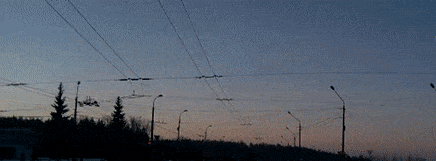
Chelyabinsk meteor
The Chelyabinsk meteor was a superbolide that entered Earth's atmosphere over the southern Ural region in Russia on 15 February 2013 at about 09:20 YEKT (03:20 UTC). It was caused by an approximately 18 m (59 ft) diameter, 9,100-tonne (10,000-short-ton) near-Earth asteroid that entered the atmosphere at a shallow 18.3 ± 0.4 degree angle with a speed relative to Earth of 19.16 ± 0.15 kilometres per second (69,000 km/h; 42,690 mph).[6] The light from the meteor was briefly brighter than the Sun, visible as far as 100 km (60 mi) away. It was observed in a wide area of the region and in neighbouring republics. Some eyewitnesses also reported feeling intense heat from the fireball.
"Russian meteor" redirects here. For the 1908 Tunguska explosion, see Tunguska event.Date
$_$_$DEEZ_NUTS#1__descriptionDEEZ_NUTS$_$_$
$_$_$DEEZ_NUTS#1__titleDEEZ_NUTS$_$_$
$_$_$DEEZ_NUTS#0__titleDEEZ_NUTS$_$_$
$_$_$DEEZ_NUTS#0__subtitleDEEZ_NUTS$_$_$
$_$_$DEEZ_NUTS#0__call_to_action.textDEEZ_NUTS$_$_$
The object exploded in a meteor air burst over Chelyabinsk Oblast, at a height of about 29.7 km (18.5 mi; 97,000 ft).[6] The explosion generated a bright flash, producing a hot cloud of dust and gas that penetrated to 26.2 km (16.3 mi; 86,000 ft), and many surviving small fragmentary meteorites. Most of the object's energy was absorbed by the atmosphere, creating a large shock wave. The asteroid had a total kinetic energy before atmospheric impact equivalent to the blast yield of 400–500 kilotons of TNT (about 1.4–1.8 PJ), estimated from infrasound and seismic measurements. This was 26 to 33 times as much energy as that released from the atomic bomb detonated at Hiroshima.[7]
The object approached Earth undetected before its atmospheric entry, in part because its radiant (source direction) was close to the Sun. 1,491 people were injured seriously enough to seek medical treatment. All of the injuries were due to indirect effects rather than the meteor itself, mainly from broken glass from windows that were blown in when the shock wave arrived, minutes after the superbolide's flash. Some 7,200 buildings in six cities across the region were damaged by the explosion's shock wave, and authorities scrambled to help repair the structures in sub-freezing temperatures.
It is the largest known natural object to have entered Earth's atmosphere since the 1908 Tunguska event, which destroyed a wide, remote, forested, and very sparsely populated area of Siberia. The Chelyabinsk meteor is also the only meteor confirmed to have resulted in injuries. No deaths were reported.
The earlier-predicted and well-publicized close approach of a larger asteroid on the same day, the roughly 30 m (100 ft) 367943 Duende, occurred about 16 hours later; the very different orbits of the two objects showed they were unrelated to each other.
Origin[edit]
Based on its entry direction and speed of 19 kilometres per second (68,000 km/h; 43,000 mph), the Chelyabinsk meteor apparently originated in the asteroid belt between Mars and Jupiter. It was probably an asteroid fragment. The meteorite has veins of black material which had experienced high-pressure shock, and were once partly melted due to a previous collision. The metamorphism in the chondrules in the meteorite samples indicates the rock comprising the meteor had a history of collisions and was once several kilometres below the surface of a much larger LL chondrite asteroid. The Chelyabinsk asteroid probably entered an orbital resonance with Jupiter (a common way for material to be ejected from the asteroid belt) which increased its orbital eccentricity until its perihelion was reduced enough for it to be able to collide with the Earth.[92]